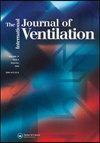IAQ in CCU units: an experimental and numerical investigation based on the outlet air height (case study: Namazi Hospital, Shiraz)
Forough Farhadi, M. Khakzand, H. Altan, Saeid Chahardoli
求助PDF
{"title":"IAQ in CCU units: an experimental and numerical investigation based on the outlet air height (case study: Namazi Hospital, Shiraz)","authors":"Forough Farhadi, M. Khakzand, H. Altan, Saeid Chahardoli","doi":"10.1080/14733315.2023.2198743","DOIUrl":null,"url":null,"abstract":"Indoor air quality (IAQ) is a significant concern that affects our health. Recent studies show how poor IAQ amplifies the effects of airborne viruses, which endanger the health of the population relative to the COVID-19. This study aims to find the relationship among IAQ, the location of the air outlet valve and the behavior of the IAQ indicators in the cardiac care unit (CCU) at Namazi Hospital, Shiraz, Iran. In this context, the condition of the air outlet valve can play an important part in preparing a better IAQ. To test the hypothesis, articles based on IAQ guidelines have been studied. Also, certain emissions (CO2, CO, PM2.5 and PM10) have been measured, and the relationship between IAQ, the location of the air outlet valve and the behavior of these emissions in the patient's room at Namazi Hospital. This room has been analyzed using computational fluid dynamics for the prediction of the specification of incoming air flow particles. Also, a Eulerian–Lagrangian model was used. In constant, the turbulence model (realizable k–ԑ) and discrete particle model were employed. The results show that when the outlet valve is placed on the wall at 20 cm, it decreased particle deposition in the room, and as a result, IAQ will be improved and at the same time, the chances of transmitting infectious diseases will be reduced. It is also indicated that a higher amount of particle deposition fraction (ca. 0.71) obtains when the outlet valve is located on the top of the wall. © 2023 Informa UK Limited, trading as Taylor & Francis Group.","PeriodicalId":55613,"journal":{"name":"International Journal of Ventilation","volume":"63 1","pages":""},"PeriodicalIF":1.1000,"publicationDate":"2023-04-16","publicationTypes":"Journal Article","fieldsOfStudy":null,"isOpenAccess":false,"openAccessPdf":"","citationCount":"0","resultStr":null,"platform":"Semanticscholar","paperid":null,"PeriodicalName":"International Journal of Ventilation","FirstCategoryId":"5","ListUrlMain":"https://doi.org/10.1080/14733315.2023.2198743","RegionNum":4,"RegionCategory":"工程技术","ArticlePicture":[],"TitleCN":null,"AbstractTextCN":null,"PMCID":null,"EPubDate":"","PubModel":"","JCR":"Q3","JCRName":"CONSTRUCTION & BUILDING TECHNOLOGY","Score":null,"Total":0}
引用次数: 0
引用
批量引用
Abstract
Indoor air quality (IAQ) is a significant concern that affects our health. Recent studies show how poor IAQ amplifies the effects of airborne viruses, which endanger the health of the population relative to the COVID-19. This study aims to find the relationship among IAQ, the location of the air outlet valve and the behavior of the IAQ indicators in the cardiac care unit (CCU) at Namazi Hospital, Shiraz, Iran. In this context, the condition of the air outlet valve can play an important part in preparing a better IAQ. To test the hypothesis, articles based on IAQ guidelines have been studied. Also, certain emissions (CO2, CO, PM2.5 and PM10) have been measured, and the relationship between IAQ, the location of the air outlet valve and the behavior of these emissions in the patient's room at Namazi Hospital. This room has been analyzed using computational fluid dynamics for the prediction of the specification of incoming air flow particles. Also, a Eulerian–Lagrangian model was used. In constant, the turbulence model (realizable k–ԑ) and discrete particle model were employed. The results show that when the outlet valve is placed on the wall at 20 cm, it decreased particle deposition in the room, and as a result, IAQ will be improved and at the same time, the chances of transmitting infectious diseases will be reduced. It is also indicated that a higher amount of particle deposition fraction (ca. 0.71) obtains when the outlet valve is located on the top of the wall. © 2023 Informa UK Limited, trading as Taylor & Francis Group.
CCU病房室内空气质量:基于出口空气高度的实验与数值研究(以设拉子Namazi医院为例)
室内空气质量(IAQ)是影响我们健康的一个重要问题。最近的研究表明,糟糕的室内空气质量放大了空气传播病毒的影响,与COVID-19相比,空气传播病毒危害了人群的健康。本研究旨在探讨伊朗设拉子纳马齐医院(Namazi Hospital)心脏科(CCU)室内空气质量、出气阀位置与室内空气质量指标行为之间的关系。在这种情况下,出气阀的状态可以在准备更好的室内空气质量方面发挥重要作用。为了验证这一假设,研究人员研究了基于室内空气质量指南的文章。此外,还测量了某些排放量(CO2, CO, PM2.5和PM10),以及室内空气质量,出气阀位置与Namazi医院病房中这些排放物的行为之间的关系。这个房间已经用计算流体动力学进行了分析,以预测进入的气流颗粒的规格。同时,采用欧拉-拉格朗日模型。在常数条件下,采用湍流模型(可实现k -ԑ)和离散粒子模型。结果表明,当出气阀放置在墙壁上20 cm处时,减少了室内颗粒沉积,从而提高了室内空气质量,同时降低了传染病传播的机会。当出口阀位于壁面顶部时,颗粒沉积分数较高(约0.71)。©2023 Informa UK Limited以Taylor & Francis Group的名义进行交易。
本文章由计算机程序翻译,如有差异,请以英文原文为准。


